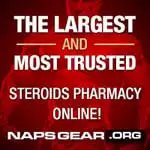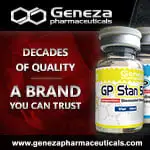You are using an out of date browser. It may not display this or other websites correctly.
You should upgrade or use an alternative browser.
You should upgrade or use an alternative browser.
Liver stuff
- Thread starter krishna
- Start date
solidspine
New member
I don’t know, but Tyler’s works well, I have only had one bad test.
Meaning the clinic said my liver was----------whatever-------------
Did not really pay a lot of attention to this report, because, I knew it was not GEAR that screwed up my liver.
Meaning the clinic said my liver was----------whatever-------------
Did not really pay a lot of attention to this report, because, I knew it was not GEAR that screwed up my liver.
tempest2003
New member
ulter, what kind of time frame are we looking at thr the liver to regenerate its self? Lets say someone does a 6 week 50mg dbol e/d cycle. what kind of time frame would we be looking at with the assistance of glucorell, vs without? im guessing it would be roughly the same and there is not a lot of significate difference from everything ive been learning about the ineffectiveness supplements latley.
macrophage69alpha
New member
Ulter said:I know, I know!! Can I answer?
It relieves oxidative stress in the cells and helps the liver regenerate new cells. So it helps the liver heal itself.
Glucorell (R+ lipoic + biotin)
increases glutathione synthesis
inhibits lipid peroxidation
restores vitamin C
restores Vitamin E
increases super oxide dimutase (SOD) levels
decreases oxidative stress
is an effective adjunctive and direct treatment for hepatis C
reverses cirrhotic lesions of the liver
increases functioning mass in damaged liver
increases mitochrondrial and ATP levels
macrophage69alpha
New member
glucorell is also
An inhibitor of secretory phospholipase A(2)
and has a host of other benefits related to glucose tolerance, glucose metabolism and clearance, prevention of dementia, improved cellular metabolism (particularly in aging systems), etc...
An inhibitor of secretory phospholipase A(2)
and has a host of other benefits related to glucose tolerance, glucose metabolism and clearance, prevention of dementia, improved cellular metabolism (particularly in aging systems), etc...
tempest2003
New member
what about my question? or was that a dodge if i ever saw one? if you're this confident in your products you would obviously know that these must be some effective products, and to know this you would have to have some kind of solid evidence would you not? Just wondering if all these people on the board and in the US are really getting their moneys worth
macrophage69alpha
New member
krishna said:So what about choline and inosotol?
yes, the best source being lecithin (caps or granules) -- and cheap
macrophage69alpha
New member
tempest2003 said:what about my question? or was that a dodge if i ever saw one?
that was an addition to ulter's answer, did not even see your question. However, there is no direct data with respect to anabolic steroids. There are over a hundred studies with other hepatoxic compounds.
J Appl Toxicol. 2004 Jan-Feb;24(1):21-6. Links
Protective effect of alpha-lipoic acid against chloroquine-induced hepatotoxicity in rats.Pari L, Murugavel P.
Department of Biochemistry, Faculty of Science, Annamalai University, Annamalai Nagar, Tamil Nadu 608 002, India. [email protected]
Oral administration of a-lipoic acid, a metavitamin, was investigated for its possible hepatoprotective effect in Wistar rats against chloroquine-induced toxicity. Rats were treated orally with alpha-lipoic acid (10, 30 and 100 mg x kg(-1) day(-1)) for 7 days before a single oral administration of chloroquine (970 mg x kg(-1) day(-1)) and alpha-lipoic acid treatment was continued for three more days. The increased level of serum enzymes (aspartate transaminase, alanine transaminase and alkaline phosphatase), bilirubin, lipids and plasma thiobarbituric acid-reactive substances (TBARS) and hydroperoxides observed in rats treated with chloroquine were very much reduced in rats treated with alpha-lipoic acid plus chloroquine. A significant decrease in plasma antioxidants such as reduced glutathione (GSH), vitamin C and vitamin E were observed in chloroquine-treated rats when compared with control rats. Administration of alpha-lipoic acid significantly improved the levels of plasma antioxidants GSH, vitamin C and vitamin E in chloroquine-treated rats. In the case of 100 mg x kg(-1) day(-1) the effect was highly significant compared with the other doses (10 and 30 mg x kg(-1) day(-1)). The results of the study revealed that alpha-lipoic acid could offer protection against chloroquine-induced hepatotoxicity. alpha-Lipoic acid had a better protective effect when compared with silymarin, a reference drug. Copyright 2004 John Wiley & Sons, Ltd.
1: Pharmacol Res. 2003 Dec;48(6):585-91. Links
Prophylaxis against lipopolysaccharide-induced liver injuries by lipoic acid in rats.Suntres ZE.
Health Hazards Group, Operational Medicine Section, Defence Research and Development Canada-Toronto, 1133 Sheppard Avenue West, Toronto, Ont, Canada M3M 3B9. [email protected]
Lipopolysaccharide (LPS) is a major cell wall molecule of Gram-negative bacteria known to stimulate the synthesis and secretion of several metabolites, such as reactive oxygen species, from phagocytes that play an important role in the pathogenesis of tissue injuries. In this study, the prophylactic effect of the antioxidant lipoic acid was evaluated in an animal acute organ injury model. Animals were pre-treated intraperitoneally with lipoic acid (50 mg kg(-1) body weight) or saline; 3 h later, pretreated animals were challenged intravenously with LPS (Escherichia coli 0111:B4, 1.0 mg kg(-1) body weight) or saline and killed 21 h later. Saline-pretreated animals challenged with LPS were extensively damaged in the liver, as evidenced by an increase in plasma alanine and aspartate aminotransferase activities. Also, LPS injection to saline-pretreated animals resulted in significant increases in plasma tumour necrosis factor-alpha (TNFalpha) and nitric oxide (NO) concentrations, suggestive of activation of the proinflammatory response. The LPS challenge to saline-pretreated animals also increased hepatic myeloperoxidase activity as well as protease and chloramine levels, suggestive of neutrophil infiltration and activation of the inflammatory response. In addition, the involvement of oxidative stress was evident, because a significant increase in lipid peroxidation was observed in the livers of saline-pretreated animals challenged with LPS. The administration of lipoic acid prior to LPS challenge resulted in a significant alleviation of liver injuries, evidenced by a general reversal of the altered biochemical indices toward normal among treated animals. These results indicate that lipoic acid may serve as a potentially effective prophylactic pharmacological agent in alleviating LPS-induced tissue injuries.
Posit Health News. 1998 Fall;(No 17):19-21. Links
New treatments for hepatitis B and C [antigen-specific transfer for A, B & C (chisolm biologicals) and thymate].Konlee M.
AIDS: Millions of people in this country are infected with Hepatitis C; however, long-term treatment for this disease is not always successful. Chisolm Biologicals produces a transfer factor panel for hepatitis A, B, and C that appears to be effective in treating hepatitis. Other products, including Thy-Mate and Liver Support, may also help treat hepatitis. Patients with hepatitis should tell their doctor what products they are using and have their physicians monitor liver enzyme levels and viral loads. One study of 24 patients showed success in using Naltrexone, Alpha Lipoic acid, milk thistle, and Hypercurium in treating hepatitis B and C. Contact information is included
1: Med Klin (Munich). 1999 Oct 15;94 Suppl 3:84-9. Links
A conservative triple antioxidant approach to the treatment of hepatitis C. Combination of alpha lipoic acid (thioctic acid), silymarin, and selenium: three case histories.Berkson BM.
Integrative Medical Center of New Mexico, New Mexico State University, Las Cruces, USA. [email protected]
BACKGROUND: There has been an increase in the number of adults seeking liver transplantation for hepatitis C in the last few years and the count is going up rapidly. There is no reliable and effective therapy for chronic hepatitis C since interferon and antivirals work no more than 30% of the time, and liver transplant surgery is uncertain and tentative over the long run. This is because, ultimately, residual hepatitis C viremia infects the new liver. Furthermore, liver transplantation can be painful, disabling and extremely costly. TREATMENT PROGRAM: The author describes a low cost and efficacious treatment program in 3 patients with cirrhosis, portal hypertension and esophageal varices secondary to chronic hepatitis C infection. This effective and conservative regimen combines 3 potent antioxidants (alpha-lipoic acid [thioctic acid], silymarin, and selenium) that possess antiviral, free radical quenching and immune boosting qualities. CONCLUSION: There are no remarkably effective treatments for chronic hepatitis C in general use. Interferon and antivirals have less than a 30% response rate and because of the residual viremia, a newly transplanted liver usually becomes infected again. The triple antioxidant combination of alpha-lipoic acid, silymarin and selenium was chosen for a conservative treatment of hepatitis C because these substances protect the liver from free radical damage, increase the levels of other fundamental antioxidants, and interfere with viral proliferation. The 3 patients presented in this paper followed the triple antioxidant program and recovered quickly and their laboratory values remarkably improved. Furthermore, liver transplantation was avoided and the patients are back at work, carrying out their normal activities, and feeling healthy. The author offers a more conservative approach to the treatment of hepatitis C, that is exceedingly less expensive. One year of the triple antioxidant therapy described in this paper costs less than $2,000, as compared to mor than $300,000 a year for liver transplant surgery. It appears reasonable, that prior to liver transplant surgery evaluation, or during the transplant evaluation process, the conservative triple antioxidant treatment approach should be considered. If these is a significant betterment in the patient's condition, liver transplant surgery may be avoided.
Toxicol Pathol. 2004 Sep-Oct;32(5):527-35. Links
Protective activity of hesperidin and lipoic acid against sodium arsenite acute toxicity in mice.das Neves RN, Carvalho F, Carvalho M, Fernandes E, Soares E, de Bastos ML, de Pereira ML.
CICECO, Department of Biology, Campus de Santiago, University of Aveiro, 3810-193 Aveiro, Portugal.
The objective of the present work was to evaluate the toxic effects of sodium arsenite, As(III), in mice and the protective effect of 2 antioxidants, hesperidin and lipoic acid, against the observed As(III)-induced toxicity. In each study, mice were assigned to 1 of 4 groups: control, antioxidant, antioxidant + arsenite, and arsenite. Animals were first injected with the vehicle or 25 mg antioxidant/kg BW. After 30 minutes they received an injection of 10 mg arsenite/kg BW or 0.9% NaCl. Two hours after the first injection, the liver, kidney, and testis were collected for histological evaluation. Liver samples were also taken for quantification of arsenic. In mice exposed only to As(III), various histopathological effects were observed in the liver, kidneys, and testes. In mice pretreated with either hesperidin or lipoic acid, a reduction of histopathologic effects on the liver and kidneys was observed. No protective effects were observed in the testes for either of the 2 studied antioxidants. In conclusion, hesperidin and lipoic acid provided protective effects against As(III)-induced acute toxicity in the liver and kidneys of mice. These compounds may potentially play an important role in the protection of populations chronically exposed to arsenic.
Similar threads
- Replies
- 7
- Views
- 524
- Replies
- 14
- Views
- 1K


 Please Scroll Down to See Forums Below
Please Scroll Down to See Forums Below 










